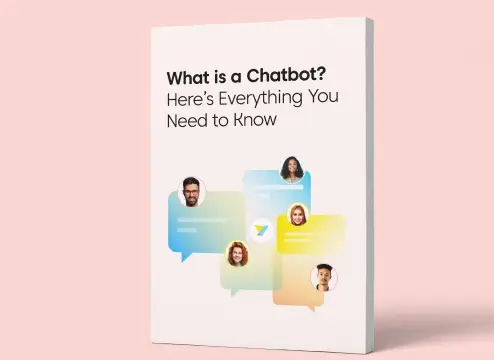Customer preferences evolve rapidly, and businesses must adapt just as quickly to stay ahead of the competition and meet their customer’s needs. Most customers avoid engaging with a business to address straightforward concerns such as changing personal account details or getting an order canceled. They prefer automated self-service options like a mobile application or a business chatbot setup.
While the popularity of automated self-service options is nothing new, customers crave more and more convenience when it comes to resolving simple queries. Now, consumers seek the ease of resolving their queries over voice commands; voicebots offer that convenience.
In fact, according to a Gartner report, AI bots are set to take up about 40% of all customer service communications. While chatbots are presently the most widespread artificial intelligence (AI) communication tool, voicebots are quickly catching up.
In this guide, we will take a deep dive into AI voicebots – a fairly new yet transformational technology. By the time you finish reading, you’ll understand what voicebots are, how they work, and how they are applied in business.
Key Takeaways:
- Voicebots are software programs powered by conversational artificial intelligence (AI) and natural language processing (NLP) that simulate conversations with humans through speech.
- There are five common types of voicebots, including rule-based, AI-assisted, conversational, personal, and voice-activated voicebots. Voicebots can be deployed through mobile devices, Internet of Things (IoT) devices, computers, interactive voice response (IVR) systems, and messaging platforms.
- Voicebots are used to provide seamless customer experience and 24/7 customer support across various industries, including banking, quick service restaurants, healthcare, insurance, travel and hospitality, retail and eCommerce, and real estate.
Let’s start by defining what we mean by voicebots:
What are voicebots?
Voicebots are automated software programs that simulate conversations with human users through speech. Voicebots are powered by artificial intelligence (AI) and natural language processing (NLP) technology. They can understand and interpret user input, generate appropriate responses, and execute simple tasks, all through voice interactions.
Voicebots are designed to provide a seamless customer experience in industries like banking, retail and ecommerce, and financial services, to name a few. Familiar examples of voicebots include Apple’s Siri, Amazon’s Alexa, and Google Assistant.
What is conversational AI?
Conversational AI is a technology powered by artificial intelligence that human users can talk to using language similar to that used to speak with other humans. It achieves this by combining natural language processing with machine learning to analyze patterns in human speech and generate appropriate responses. The most common types of conversational AI are chatbots and voicebots.
What is the purpose of using a voicebot?
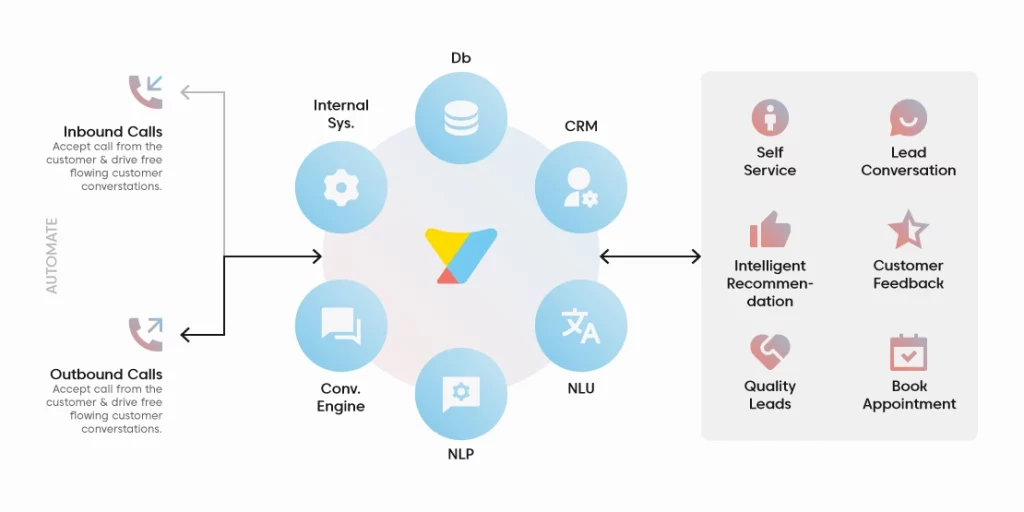
A voicebot must address customer queries instantly since voice is the fastest form of human interaction–faster than keying in queries and traversing drop-down menus using a mouse. Consequently, voicebots present enormous opportunities to elevate a business’s customer service levels.
You can converse with a voicebot at any time of the day. Using voicebots, customers can get in touch with the contact center from anywhere and at any time. Therefore, customers do not have to wait to speak with an agent or be compelled to call during business hours. Organizations can enhance customer service markedly through the immediacy of these bot-driven chats.
Thanks to the power of AI, voicebots upgrade their responses constantly based on the behavior and history of the customer. Even when they fail to offer a customer the proper response, they learn and contextualize from these chats to give the correct responses in the future.
However, creating a voicebot that genuinely echoes your brand’s tone of voice and recognizes the context and content of a customer’s request poses a significant challenge that you can only conquer with the help of experts.
Nine benefits of using voicebots in business
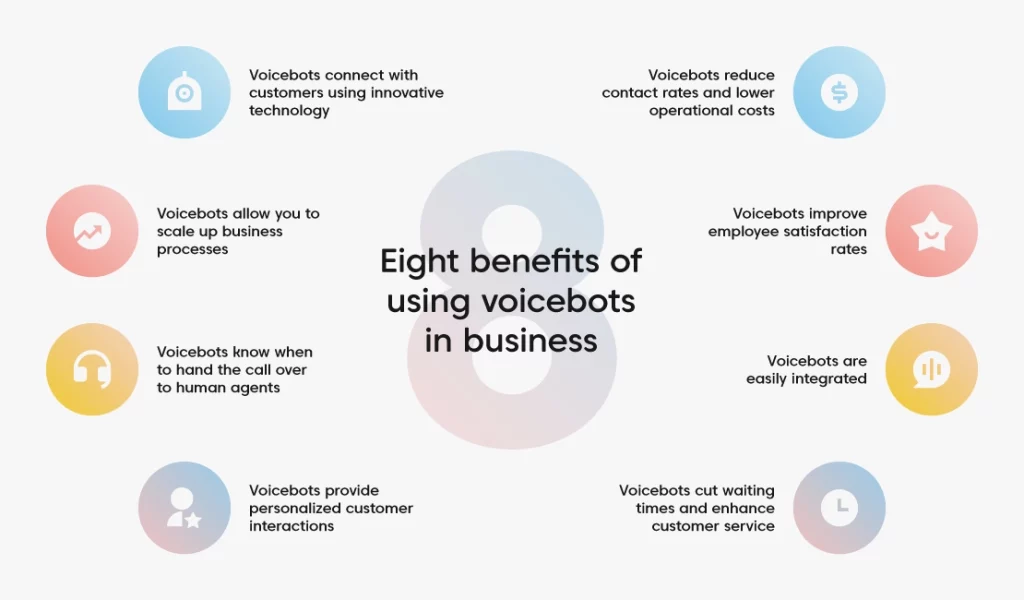
Voicebots benefit business operations in many ways. Read on to learn about the key advantages of investing in voice automation:
1. Voicebots reduce contact rates and lower operational costs
This is possibly the primary benefit for businesses in deploying voicebots. They boost resources and reduce contact rates by automating basic customer support chats that do not require interventions from live agents. Besides, contact center agents are released from handling tedious, tier-1 customer support queries, and they get the freedom to focus on more intricate customer concerns.
2. Voicebots allow you to scale up business processes
Humans are trained to cope with two to three chats at a time. On the other hand, voicebots can manage without any limit. Firms can easily scale up or down service depending on the inflow of calls.
3. Voicebots know when to hand the call over to human agents
Voicebots understand when they must pass a customer on to a human. Despite AI-powered voicebots being extremely smart and sophisticated, there will be times when voicebots cannot offer the right answer or all the right answers, and specific questions require a human touch. Voicebots stand out in providing direct, FAQ-based responses. Still, when the customer query becomes more complex, they can transfer the call to a human agent to address the situation.
4. Voicebots provide personalized customer interactions
Voice-based interactions present new possibilities to provide superior personalized experiences and relationships. For example, with voice recognition, voicebots can instantly authenticate the customer and use the customer’s history with a brand to provide tailored answers. Interactive voicebots can understand the user intent more effectively and shall be more empathetic to users, thereby enhancing the customer service experience, considering the conversational setting of the technology. Humans tend to be more impulsive in verbal chats than in thought-out text-based exchanges.
5. Voicebots connect with customers using innovative technology
With scientific innovations in NLP, intelligent voicebots have developed the ability to simulate the nuances in speech. This is a natural language progression and must be heard to be understood. AI today is a driving force in human communication; the time when voice machines drove callers to the edge is a thing of the past. There is no need to worry over enormous language menus, where we were expected to choose from specific keywords and then broadcast them forcefully. The conditions today are incredibly different.
6. Voicebots improve customer satisfaction rates
Voicebots enhance customer satisfaction by enabling businesses to provide 24/7 availability, faster response times, and personalized recommendations. Additionally, voicebots can help reduce human error, leading to more accurate information presented to customers and faster time to resolution. Overall, these benefits create a more cohesive, streamlined customer experience that leads to increased customer satisfaction and loyalty.
7. Voicebots improve agent satisfaction rates
Voicebots improve agent satisfaction rates by cutting down workloads. When voicebots handle the heavy lifting of routine customer service tickets, support agents can focus on higher-value tasks. This reduces employee burnout, improves productivity, and increases job satisfaction.
8. Voicebots are easily integrated
Voicebots can flawlessly and easily integrate with the customer support technology stack and telephony infrastructure. This makes self-service, autonomous alternatives quite sophisticated and offers voicebots superior capabilities.
9. Voicebots cut waiting times and enhance customer service
Several people continue to doubt whether voice automation delivers quality customer service. However, this apprehension is misplaced as there is no reason to question a voicebot used to answer queries that can be resolved automatically and swiftly, regardless of the time of the day. When given the option between waiting to speak to a person or getting an immediate answer from a voicebot, many choose the latter. Eventually, the crucial factor for a constructive customer experience is not the condition of talking to a real human being but whether the customer’s concerns were expertly and promptly recorded and settled. Today the technology has advanced to such an extent that the end-user often fails to tell that it is a bot answering them.
Watch this webinar to learn more about the benefits of using voicebots for your business.
How does a voicebot function?
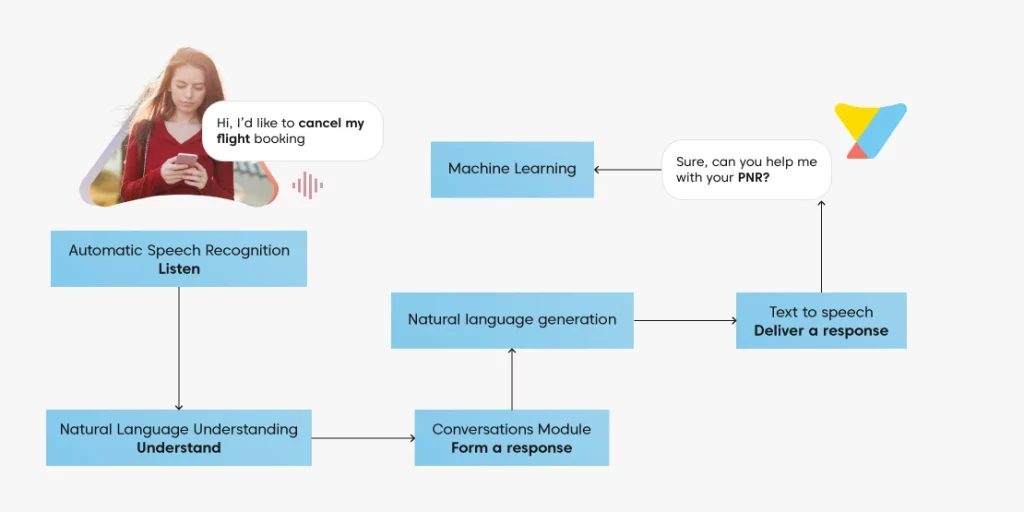
AI-powered voice recognition bots comprehend the speaker’s request through advanced natural language processing (NLP) and voice recognition in real-time without human intervention. They use it to converse with the caller, with a high intent accuracy rate of 97 % and above.
To develop a robust and AI-driven voicebot, you will need the following key elements:
- Automatic speech recognition that listens to the request made by the caller.When a caller speaks out, the system identifies his / her voice using Voice Activity Detection. The caller’s voice is transformed into text through speech recognition. These two elements comprise the automatic speech engine and let the voice get transcribed into text format.
- Natural language understanding that comprehends the speaker’s intent. With the introduction of natural language understanding (NLU), the voicebot can accomplish greater understanding. Through NLU, a voicebot realizes the intent behind the caller’s speech and distinguishes and obtains aspects that propel the conversation forward.
- Conversation module that establishes the correct response. Contextual chat allows users to interact effortlessly and does not push them to follow a particular course. The conversational style centers on the context of the user request, recognizing the intent, and collecting all the relevant data and information through entirely natural, unstructured discussions.
- Natural language generation that responds to users in their own language.Natural language generation (NLG) lets voicebots respond to users in their own language. NLG is a software process that translates machine representations of human concepts into words expressed in everyday language. NLG lets voicebots follow up on NLU by generating a response to the speaker’s intent.
- Text-to-speech system that responds to the speaker’s query.Text-to-speech converts text into genuine speech. It is a computer-generated reproduction of human speech created through deep learning techniques.
- Machine learning lets voicebots improve their simulation of human conversations by analyzing data from user discussions and adding data to their knowledge database.Machine learning lets voicebots improve their ability to simulate human conversations by studying data from user discussions. This improvement is achieved using conversation input to identify speech patterns and build models that replicate natural conversation more closely. Over time, the voicebot adds to its knowledge base and ability to interpret and generate human speech.
What are the different types of voicebots?
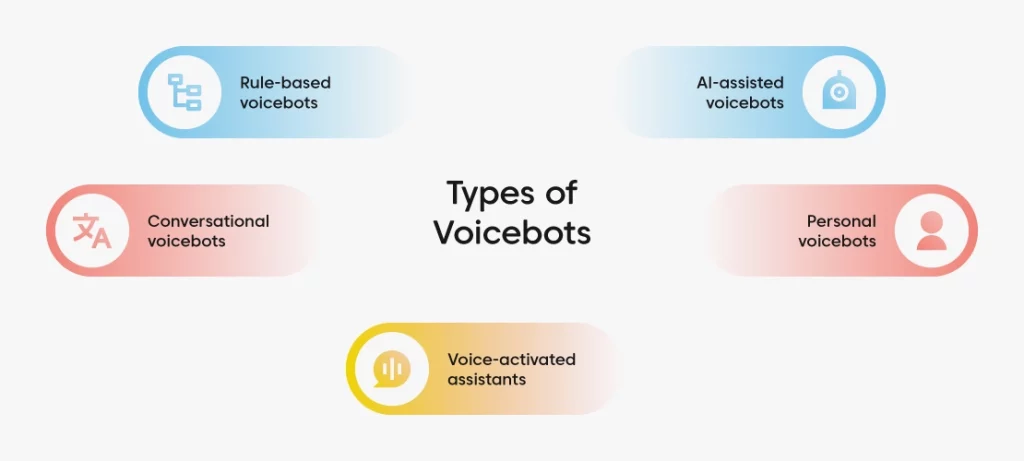
Voicebots fall into a few categories based on their methods of interpreting speech, their interaction with speakers, and their applications. The most common categories of voicebots include:
- Rule-based voicebots, which follow predetermined rules for engaging speakers
- AI-assisted voicebots, which can learn new rules for carrying on conversations
- Conversational voicebots, which can carry on discussions in natural language
- Personal voicebots, which use predetermined commands and rules to help users perform programmed tasks
- Voice-activated assistants, which use natural language to engage users and help them perform a flexible range of tasks
Let’s compare these different types of voicebots:
Rule-based voicebots
Rule-based voicebots, also known as simple voicebots, use predefined sets of questions and rules to provide answers or perform tasks. For example, a banking voicebot might assist with options such as checking account balances, finding the nearest ATM, or updating the address associated with an account. Rule-based voicebots excel at handling FAQs and routine tasks. They only can carry on conversations and perform tasks within their predetermined limits, so they sound and act robotic. They can’t learn without additional programming.
AI-assisted voicebots
AI-assisted voicebots, also known as smart voicebots, use machine learning to analyze natural language input and learn new rules for interpreting conversations. They can use the context of conversations to interpret the speaker’s intent before answering questions or performing tasks. This intent analysis makes them sound more natural than rule-based voicebots while giving them more flexibility for responding to speakers. Examples of AI-assisted voicebots are Alexa, Siri, and Google Assistant.
Conversational voicebots
Conversational voicebots are voicebots that can carry on discussions using natural language. They use AI and natural language understanding to let speakers carry on conversations using everyday speech. Most conversational voicebots are AI-assisted voicebots, distinguished mainly by an emphasis on applications that stress natural conversation. Some conversational voicebots are hybrids that combine features of rule-based and AI-assisted voicebots, using rule-based responses for routine questions and tasks and AI for more complex conversations.
Personal voicebots
Personal voicebots are rule-based voicebots designed to help speakers perform specific practical tasks. They can answer a predetermined range of questions and perform a limited set of functions. They often serve to support customer service and sales departments. For instance, they can automate routine procedures such as answering FAQs or placing outbound calls.
Voice-activated assistants
Voice-activated assistants are AI-assisted voicebots that use natural language to help speakers answer practical questions and perform daily tasks. They have more flexibility than personal voicebots to adapt to speakers and perform customized tasks. AI-assisted voicebots installed on mobile devices like Siri often serve as voice-activated assistants.
Where can voicebots be deployed?
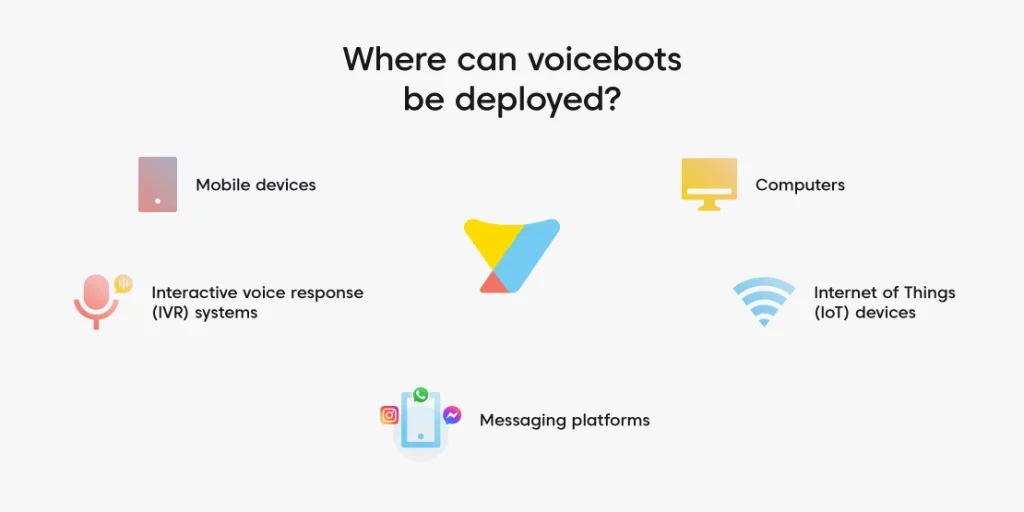
Voicebots can be deployed on virtually any digital channel. Some of the most important channels include:
- Mobile devices: By nature, mobile devices support speech, making them versatile channels for voicebot applications. Apple devices such as iPhones, iPads, and Apple Watches come with the Siri voice-activated assistant built into the iOS operating system. Android devices support voice-activated assistant apps such as Amazon Alexa, Google Assistant, Microsoft Cortana, and Herbie.AI. Mobile devices also can be used to access rule-based and AI-assisted voicebot apps designed for computers, IVR systems, and social media messaging platforms. In short, you can access most voicebot apps via mobile devices.
- Internet of Things (IoT) devices: The Internet of Things extends the internet by connecting with local networks running hardware devices such as sensors in manufacturing plants, hospitals, smart cars, smart home devices, and smart cities. The IoT also encompasses software running on such networks or the internet. Voicebots can be integrated into the IoT through any device which accepts voice input. For example, a bank ATM with a speaker system can run a voicebot application. Many consumers run IoT voicebot applications using smart speakers which support Amazon Alexa.
- Computers: Computers with built-in or external microphones can support voicebot applications. Devices running Windows come with Microsoft’s Cortana voice assistant built in. Mac devices support Siri and Voice Control, enabling voice-controlled navigation and interaction. You can use computers to access voicebot apps running on external hardware devices, software programs, internet apps, social media platforms, or IVR systems. Video games played on computers can be controlled by voicebot apps.
- Interactive voice response (IVR) systems: Interactive voice response systems are automated phone systems that let callers give voice commands, hear computer-generated answers, obtain information, and execute tasks. IVR systems usually use rule-based voicebot technology to handle routine inquiries and tasks, but some incorporate AI-assisted voicebots for greater flexibility. They often support customer service teams by handling frequently asked questions and common tasks. For example, many credit card companies use IVR systems to let customers perform tasks such as checking account balances
Features of AI-based voicebots
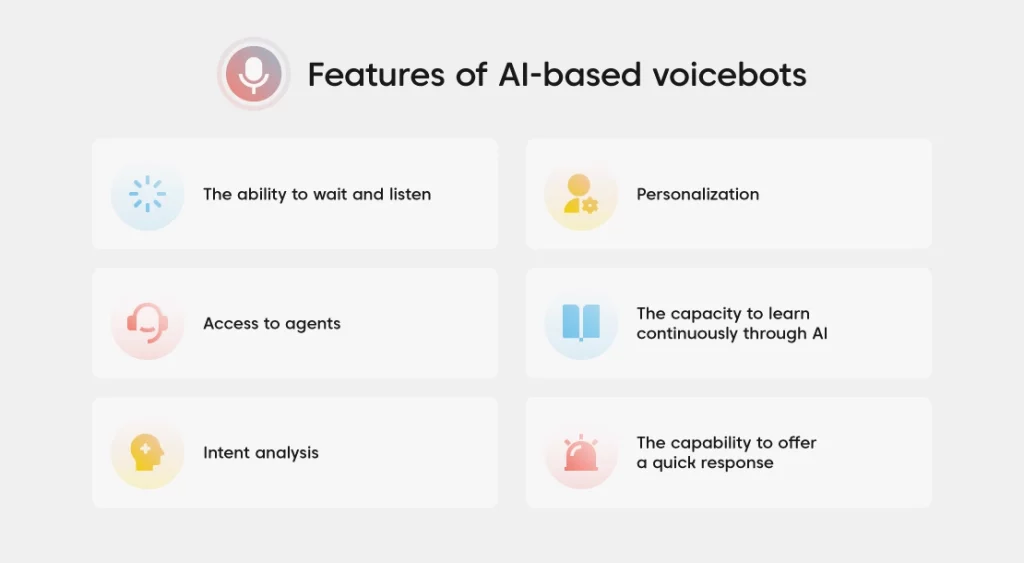
Here are the key features a voicebot must possess to ensure a smooth conversation:
- The ability to wait and listen: The argument around intent understanding shows that the standard set for AI assistants such as voicebots is relatively high. While the customer would like to be a ‘good listener’ so it can ascertain the next moves or stop when the customer on the other end is speaking, you also would like the bot to have the ability to make the motive of its call clear.
- Personalization: Voicebots enable businesses to provide personalized customer support by using smart insights about the customer’s purchase history, delivery status, complaints, preferences, etc. With this information, voicebots can deliver highly personalized, multi-turn conversations to offer customers relevant product recommendations, loyalty options, promotional offers, and more without requiring the customer to navigate lengthy and complicated IVR menus.
- Access to agents: One of the objectives of a voicebot is to help agents in fulfilling customers’ demands. Bots are not there as an alternative to agents. During a call, a customer has the option to talk to an agent. However, this is only sometimes necessary and must be based on predefined user-oriented fallback guidelines.
- The capacity to learn continuously through AI: Comprehending human speech is an intricate endless pit and a never-ending procedure. Often, humans misconstrue and misinterpret each other’s words. In this respect, voicebots have managed to achieve a great deal. An AI-driven voicebot, for example, knows this truth and never stops learning. It constantly enhances its predictability and accuracy based on prior results.
- Intent analysis: Intent analysis is possibly the most crucial feature. Subtext and understanding are critical during an interaction. Unfortunately, as humans, we are only sometimes straight to the point when we talk. Given this fundamental paradox, a voicebot must be able to use its intent analysis or the power to obtain the meaning behind customer statements.
- The capability to offer a quick response: Like most other technologies, speed is of the essence for an enjoyable, seamless experience for mobile users. A decent voicebot must be able to understand and act at the same speed at which the customer talks. Delays and sluggish responses cause frustration and build an undesirable impression of the business.
How do different industries benefit from using a voicebot?
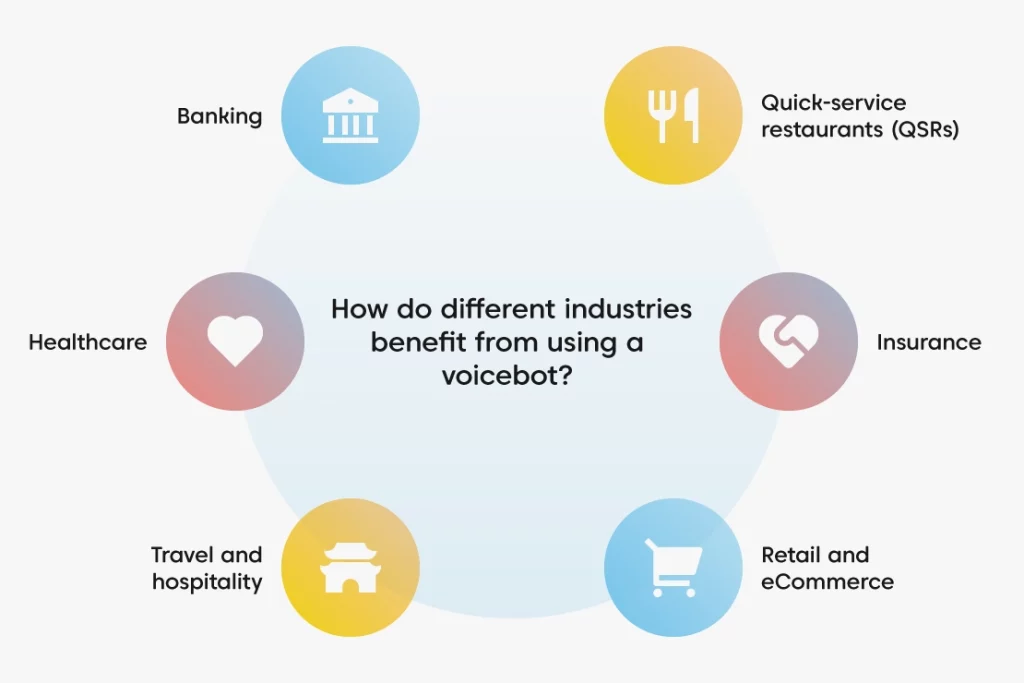
Many industries already benefit from using voicebots, and the list grows daily. Some of the key industries leading voicebot adoption include:
- Banking
- Quick-service restaurants (QSRs)
- Healthcare
- Insurance
- Travel and hospitality
- Retail and eCommerce
In this section, we’ll explore how these industries apply voicebots. Many industries use voicebots besides those listed here, and many others could benefit from adopting the technology. See our extended coverage to explore additional use cases of voicebots.
Banking
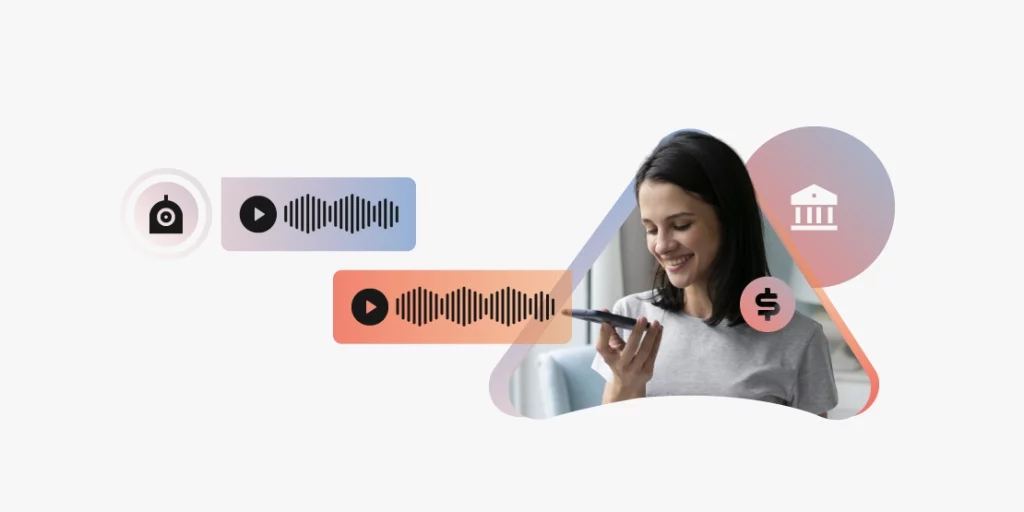
Voicebots are helping banks handle customer service in the following ways:
- Handling outbound customer calls: At times, banks feel the need to run an outbound promotional campaign. This is where voicebots help banks call hundreds or thousands of prospective customers. If a customer is keen on getting to know the details, the voicebot can relay the call to an agent. Voicebots also help banks run customer service assessment surveys.
- Authenticating customers: Before an agent can help with a query involving a customer’s bank account, they must validate their identity. This can be difficult to scale up and frequently leads to long backlogs. With voicebots, banks can run the client verification process without engaging with a human. The voicebot can request the caller to share details about their data, swiftly run it by the system, and confirm their identity. The same procedure can be carried out for thousands of clients simultaneously.
- Blocking stolen or lost credit and debit cards: From a customer experience standpoint, this is perhaps the most useful power banks can bestow on voicebots. Customers will not have to wait anymore to talk to an agent while worrying whether the thief is withdrawing funds from their credit line or account.
- Managing bank accounts: Once the client is verified, the voicebot doesn’t have to hand over the call to an agent immediately. It can do several tasks autonomously, such as examining the account balance, carrying out money transfers, and verifying credit scores.
Quick service restaurants (QSR)

The use of voicebots in QSRs (also known as fast food restaurants) is proliferating. If your business has not introduced voice technology yet, consider its benefits before your customers leave you for a voice-enabled competitor. Customers today look for extraordinary experiences when they dine out, order in, or drive through; voicebots can help bring quick results. In the Opus Research Study, 94% of QSR leaders deemed a delightful experience and customer satisfaction to be the leading end-user benefits of voice-enabled AI solutions.
Here are some of the different ways that QSRs can use voicebots:
- Upselling and cross-selling: QSRs can use voicebots to recommend additional food items or promotions. For example, when the customer orders, the voicebot can suggest items that would go well with their meal. Or following a meal, the voicebot can offer promotional coupon options reflecting items ordered by other customers who ate a similar menu. Voicebots can integrate with customer relationship management (CRM) software to track repeat customer purchase history and suggest items matching their preferences.
- Drive-thru ordering: Voicebots can be connected with drive-thru speaker systems to process customer orders. For customers, this can reduce wait times and improve the accuracy of orders. This reduces the manual workload for customer service teams so team members can focus on food preparation and other tasks.
- Order status updates: Voicebots can be used to update customers on wait times and the status of their food. These can be provided through speaker systems, mobile devices owned by the restaurant, or apps installed on the customer’s smartphone. Both on-site customers and takeout customers can receive order status updates this way.
- Multilingual support: Voicebots can process any language, allowing them to converse with and take orders from customers who speak different languages. This can allow restaurants to serve more customer demographics. It also empowers restaurant chains to expand into new areas. And it provides superior service to customers who speak second languages.
Healthcare

Voicebots help healthcare providers increase customer service efficiency, relieving staff workloads and reducing patient wait times. Here are some of the most common applications of healthcare voicebots:
- Finding a medical provider: Voicebots can use voice prompts to identify customers, locate customer insurance information, and find appropriate medical providers. Stored information about primary care providers and provider networks can speed up the process. With this information, the voicebot can talk the customer through available options.
- Appointment scheduling: Voicebots can assist with appointment scheduling. Patients can use voice input to find open time slots, check clinic and pharmacy opening hours, and schedule appointments automatically. This saves time for both patients and staff.
- Telemedicine: Voicebots can support the delivery of telemedicine care. Patients can use voice input to get answers to frequently asked questions about symptoms, insurance, locations, and availability. Voicebots can administer online medical consultations by collecting patient information before connecting patients to team members.
- Medication refills and reminders: Voicebots can streamline medication refill and reminder processes. Patients can use voice input to check prescription schedules and place orders. Voicebots then can follow up by reminding patients when it’s time to pick up a prescription or reorder.
Insurance
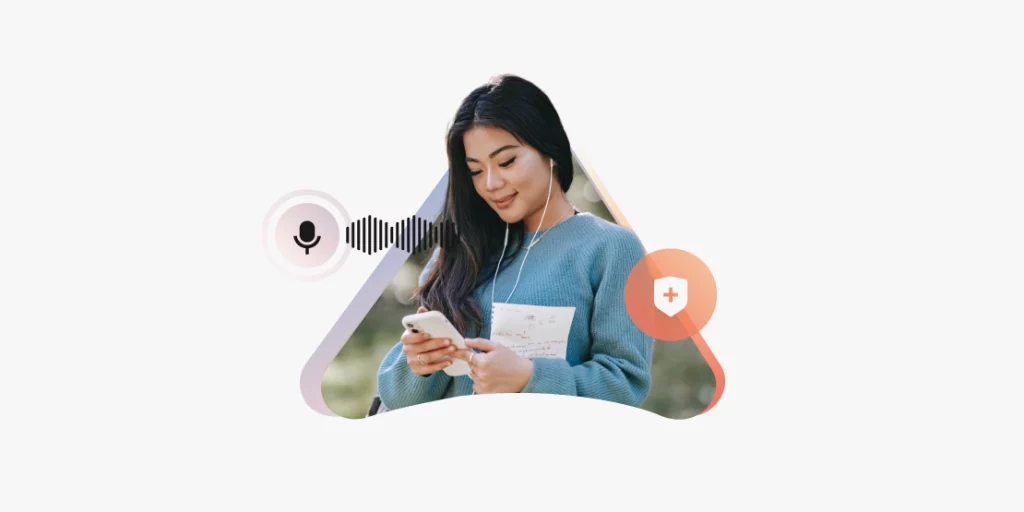
Voicebots help insurance providers deliver better service while handling internal processes more efficiently. Here are some ways insurers are using voicebots:
- Policy inquiries: When policyholders call to consider making a claim, voicebots can guide them through the policy inquiry process. Voicebots can provide customers with information about their policy coverage. The voicebot also can record information about the customer’s inquiry in the company database.
- Claim processing: Voicebots help streamline the process of claim management. Customers can file claims automatically using voice input, check claim status, and upload receipts. For items that require manual attention, voicebots can forward policyholders to the right agent.
- Customer risk assessment: Voicebots can help insurance providers assess risk more accurately. Customers can use voice input to provide information used for risk assessment. This information can be combined with data from other sources and analyzed by AI to assess risk better than conventional analysis would allow.
- Insurance recommendations: Voicebots can help insurance providers make personalized insurance recommendations. You can use voice input from customers to analyze options with AI. Based on this analysis, the voicebot can provide recommendations optimized for the customer.
Travel and hospitality
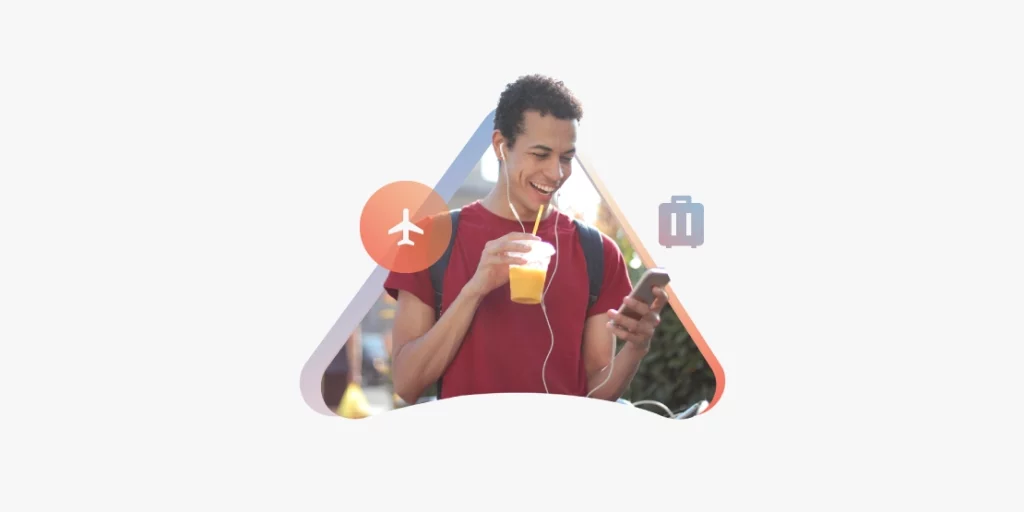
Voicebots serve a valuable role in the travel and hospitality industry by streamlining customer service delivery for greater satisfaction. Here are some ways voicebots are enhancing the experience of travel and hospitality customers:
- Booking and reservations: Voicebots allow travelers to instantly book flights or make hotel reservations using speech input. Many travelers prefer to use voice search when planning trips. Voicebots support this preference. Customers can make, modify, or cancel bookings and reservations through speech with zero hassle.
- Flights, hotels, and restaurants: Voicebots make it easy for travelers to make travel plans and check on the details of their itinerary. By speaking into their smartphone, travelers can check flight times, compare hotel prices, or browse restaurant menus.
- Concierge services: AI capability allows voicebots to serve as smart concierge services. Voicebots can check data about a traveler’s travel plans and purchase history and use the information to provide personalized recommendations for local lodging, events, attractions, and restaurants.
- Check-in and check-out: Voicebots save airline and hotel customers time checking in and checking out. Using speech, travelers can check in to their flights without waiting in line. Guests can check in and out of hotel rooms automatically without involving staff. For requests that require staff members, the voicebot can recognize the need and pass on notifications to the appropriate party.
- Language translation: Because voicebots can be programmed to recognize any language, they are efficient translators for transportation and hospitality applications. International airports can communicate with travelers from any country without requiring a human translator, making it easy for customers to book flights or check flight details in any language. Hotels can serve speakers of all languages without hiring on-site translators.
Retail and eCommerce
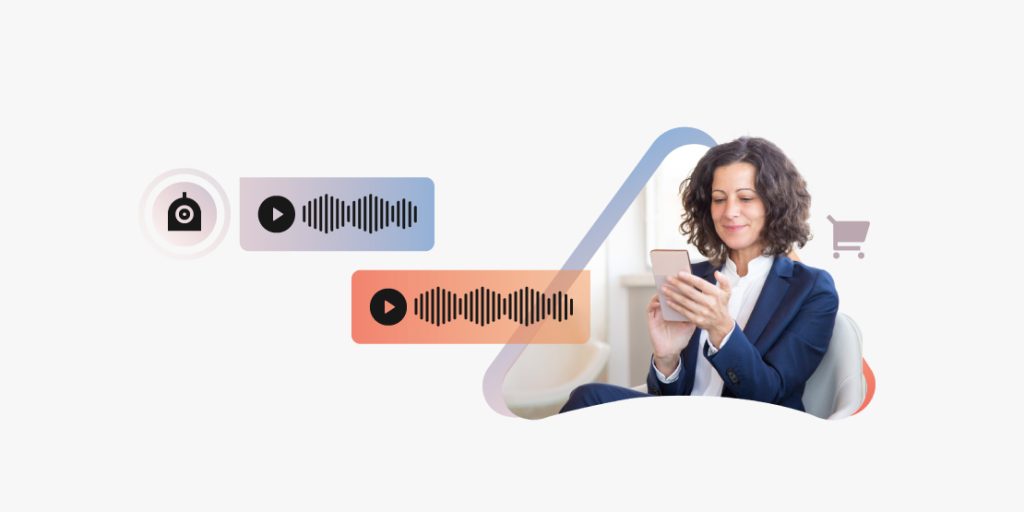
Voicebots serve the retail and eCommerce industry by delivering a more personalized shopping experience and improving the quality of customer service. Here are some ways voicebots help retail and eCommerce merchants increase customer satisfaction:
- Personalized product recommendations: Voicebots can use AI to recommend relevant products, discounts, and promotions based on a customer’s browsing and shopping history. This provides a more personalized shopping experience and boosts customer satisfaction. Greater personalization presents customers with products they are likelier to want, increasing conversion rates and creating upsell and cross-sell opportunities. This increases average purchase value, customer lifetime value, and revenue.
- Shopping assistance: Voicebots can serve as smart shopping assistants by automating tasks performed by floor associates in physical stores. Voicebot apps can help customers find products, assist shoppers in comparing prices, and guide them to transactions. This increases sales, improves customer service, and boosts client satisfaction.
- Order tracking: Voicebots let customers and employees use speech to track orders. Customers can check on the status of an order shipment or refund request by simply speaking into their smartphone. Employees assisting with customer service can locate order information automatically.
Real estate

Voicebots serve the real estate industry by helping home buyers find properties and helping real estate agents sell homes. Here are some of the ways voicebot applications are making an impact on real estate:
- Assisting in the property search: Voicebots help home buyers find properties. Today, the majority of home buyers begin their property search online. With voicebots, they can access online property searches by speaking into a smartphone, smart speaker, or computer speaker. Voicebot AI can help home buyers find homes matching their requirements in terms of criteria such as location, price, and type of home. For real estate agents, this makes it easier to get properties in front of buyers who would be interested in them. Voicebots also can notify agents automatically when buyers are interested in properties. Because home buyers buy most frequently from agents who answer them first, this provides a crucial competitive edge.
- Providing property information: Voicebot apps let home buyers use the sound of their voice to pull up property information. Voicebot AI can determine the speaker’s intention and identify the relevant information. It even can offer relevant details the home buyer may not have mentioned, such as distances to local schools or shopping centers.
- Scheduling property viewings: With voicebots, scheduling property viewings is as simple for the home buyer as talking into their phone. The voicebot’s AI can review available time slots and schedule viewings automatically without the real estate agent needing to check their schedule manually. Voicebots can provide property details, send digital brochures showcasing property features, provide directions to properties, and send reminders of upcoming property viewings to home buyers and real estate agents.
- Customer service: Voicebots make it easy for real estate teams to provide 24/7 availability. Real estate agencies can use voicebots to quickly respond to customer inquiries about properties at any time, including outside of business hours, resulting in higher lead generation. Additionally, voicebots can handle many simple routine inquiries to help automate the real estate sales process and move prospective buyers through the sales pipeline. Voicebots can also help real estate teams provide a personalized experience for prospective buyers. Using customer data on search history, budget, and preferred location, voicebots can provide personalized property recommendations to potential buyers.
How voicebots enhance the customer service experience
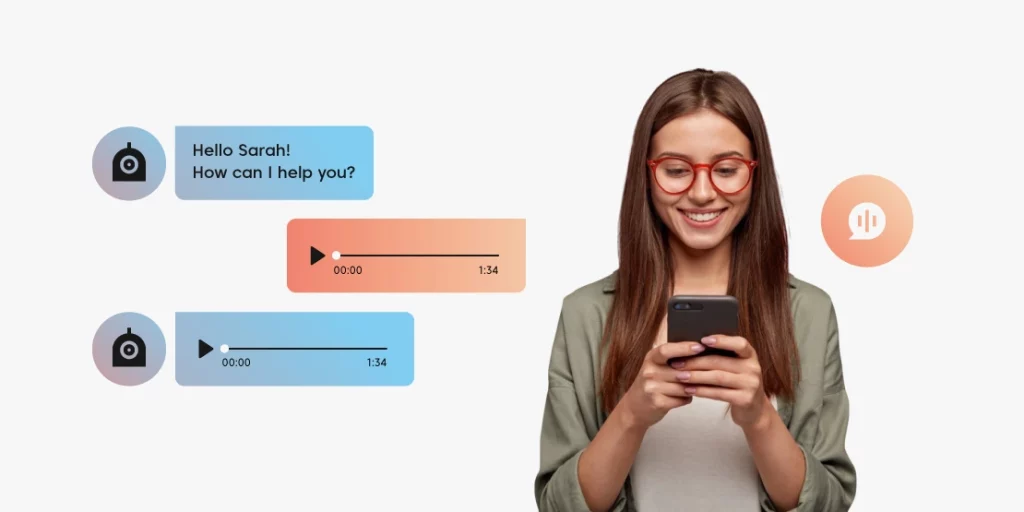
Voicebots are the future of chatbots and enhance the customer experience in the following ways:
Engaging customers proactively
Voicebots save time and money by contacting customers with appointment reminders, offers/discounts, due dates, renewals, and customer feedback assessments.
Delivering a coherent and broad customer experience
Voicebots guarantee that customers have inclusive conversations. A human agent is often not fluent in different languages to resolve customer inquiries globally. Voicebots triumph over this obstacle and ensure that all customers get the same degree of service, irrespective of their language.
Offering quick response times
Voicebots ensure that customers are not kept waiting to speak to an agent. Even if the voicebot fails to address a problem, responding to the call immediately, instead of making them wait, can stop a customer from getting annoyed.Read this blog to learn how to automate voice AI contact centers
Conclusion
Thanks for reading our Voicebots guide! We hope you found the information useful. We covered a lot of ground, so let’s recap some of the main highlights:
Voicebots leverage the simplicity of speech and the sophistication of AI to help you engage customers in more personalized ways while increasing your efficiency and ability to scale effectively. This increases customer satisfaction while cutting labor and costs and benefiting your bottom line.
Voicebots achieve this by combining technologies ranging from automatic speech recognition and natural language understanding to text-to-speech generation and machine learning. Some voicebots use a rule-based approach to perform functions such as routine personal assistance, while others leverage AI to support more flexible engagement.
Voicebots can be deployed over virtually any digital channel, from mobile devices and IoT devices to computers, IVR systems, and instant messaging apps. This makes voicebots suitable for serving any industry, from banking, restaurants, healthcare, and insurance to travel, retail, customer service, and real estate.
Regardless of your industry, voicebots can improve your efficiency and speed up your customer service, allowing you to deliver satisfaction at scale. Unlike humans, voicebots are available 24/7, ensuring customers get information and resolve their issues anytime. Customers are getting answers to general questions and more pressing demands, such as revoking a lost/stolen credit card.
Enhance your customer experience with Yellow.ai
Now that you have a solid understanding of the potential of AI voicebots, it’s time to put your knowledge to use. One way to get started is with Yellow.ai’s Conversational AI & Chatbot Platform. Yellow.ai combines the best of AI and human intelligence to automate customer experience for enterprises across key industries worldwide. Our virtual voice assistants guide customers every step of the way through:
- Onboarding/welcome calls
- Reminder calls
- Notification calls
- Feedback/survey calls
Trusted by over a thousand plus global brands such as Sephora, MG Motors, Bajaj Finserv, BPCL, Waste Connections US, and Tata, Yellow.ai has clients from over 30 nations, with AI chatbots and voicebots in more than a hundred languages, across over 35 channels. Learn more about Yellow.ai’s voice automation solution, and request a demo to see how it works for yourself.
Frequently Asked Questions
No. A chatbot is used for online interactions using text, on the other hand, a voicebot interacts only through voice.
Voicebots and chatbots differ in several key respects. First, as their names indicate, voicebots take keywords from users’ spoken dialogue, while chatbots interpret text messages. This makes voicebots more natural and easier to use than chatbots.
Chatbots are intelligent enough to recognize the context of a chat and perform the correct bot flow. However, they cannot find answers or perform certain activities independently. In contrast, a voicebot goes beyond understanding words, can wriggle around existing resources, and helps resolve a broad set of requests through natural language understanding.
Voicebots work by receiving voice input, translating it into text a computer can analyze for patterns, generating a response, and translating the response from text back into computer-generated speech. This translation from speech to text and back again lets voicebots engage with humans through voice as if they were talking. Voicebots can respond to customer queries using speech to interact with humans more rapidly than text-based chatbots.
Yes. Using a voicebot is as safe as using any other secure digital application. Voicebots can use the same security tools as other digital apps to protect user identity and data. Voicebots have the added advantage of deploying voice recognition as a biometric user authentication method. Voices have unique patterns similar to fingerprints, making voice recognition a useful security tool for voicebots. While no digital application is 100% foolproof against determined hackers, AI security tools are continually improving their ability to detect attempts to imitate voices or use voice recordings. This makes voice recognition harder to bypass than some other security methods.
IVR systems and voicebots both use speech, but legacy IVR systems typically use predetermined menu options, while voicebots support natural speech engagement. While IVR uses AI to understand and respond to voice queries, voicebots use NLU to determine callers’ meanings and intents.
IVR is an automated telephone system that can offer helpful information or conduct transactions for callers 24 hours a day. IVR is ideal when a business has a limited budget and does not have to offer a conversational experience. Voicebots are best when a business wants to provide a sophisticated conversational experience across several communication channels in multiple languages.






